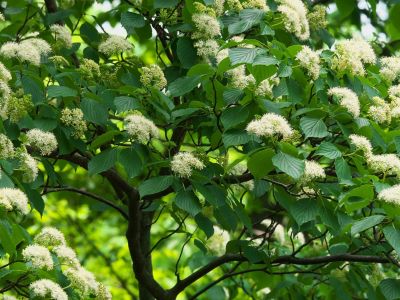Pagoda Dogwood Information
Pagoda dogwood (Cornus alternifolia) is a large shrub or small tree for a garden or backyard. The pagoda dogwood is hardy in the U.S. Department of Agriculture plant hardiness zones 3 through 7. It is also an attractive plant. When you are growing pagoda dogwood trees, you’ll see that the branches are tiered and horizontal, turning up slightly at the tips. Pagoda dogwood information suggests that the blossoms are also a nice addition to a landscape. Although they are small, the creamy flowers are very fragrant and bloom in 2 to 3 inch (5-8 cm.) groupings in late spring. These give way to berry-like drupes, the color of blueberries that appear on crimson stalks. The fruits mature in late summer. The long, oval leaves turn purple in autumn. This dogwood is of great benefit to wildlife. The flowers attract butterflies and the dense foliage provides excellent nesting conditions for birds, while the drupes make meals for them too.
Pagoda Dogwood Growing Conditions
When you are growing pagodas, you’ll be particularly interested in tips about pagoda dogwood growing conditions. In fact, the trees have quite specific requirements. Ideal pagoda dogwood growing conditions include a sunny planting site that gets some shade during the heat of the afternoon. You’ll want to find a spot with moist, fertile soil. The soil should also be acidic and well-drained. If you find a great planting location, growing pagoda dogwood trees requires less effort. That doesn’t mean that no pagoda dogwood care is required, however. Pagoda dogwood information suggests that these plants require regular irrigation. This is especially important in areas that do not get precipitation in the summer. It also helps your pagoda dogwood if you mulch the root area regularly. This locks in the moisture and also stabilizes the soil temperature.
